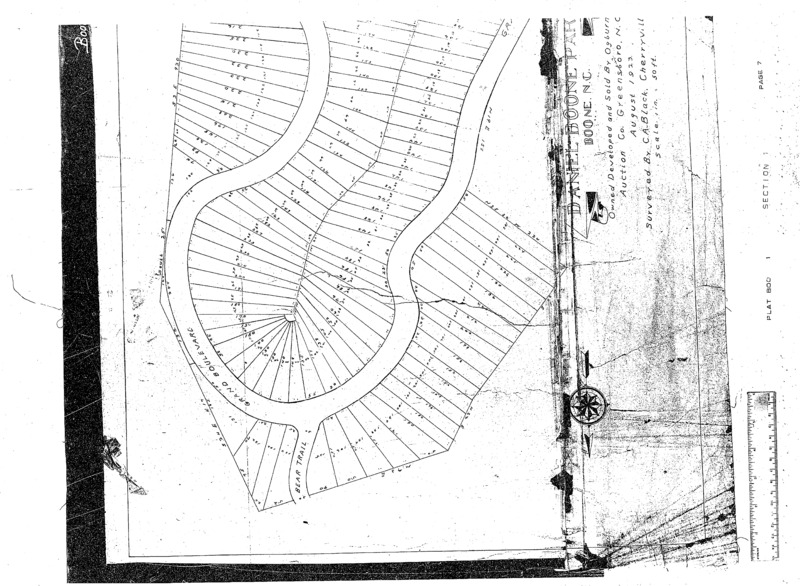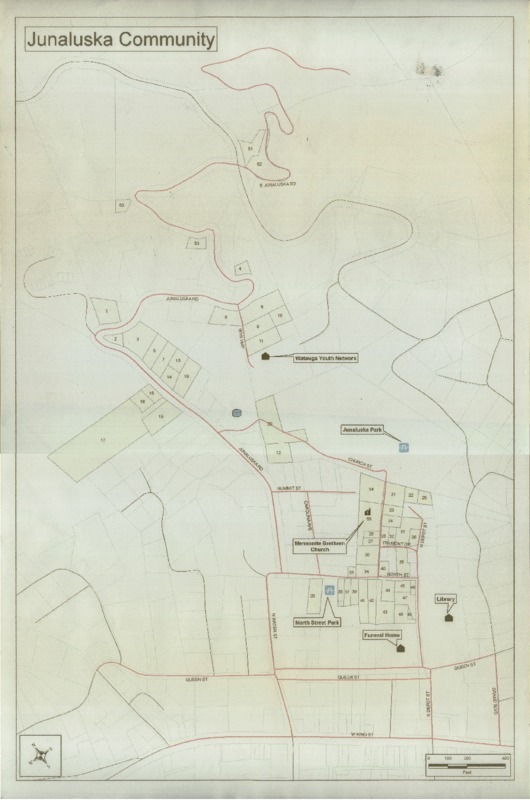Mortgage Discrimination in Watauga County
Research Findings for Mortgage Discrimination in Watauga County
Like many other places, Watauga County has a history of segregation and racism. There have been a few Op-Ed pieces that have come out in recent years discussing racism and segregation in Watauga County, but for the most part, the segregation and discrimination have not been documented to the general public. In the last couple of years, research projects have revealed deeds and neighborhood plans that have clauses preventing the sale of property to a person of color.
Mortgage Discrimination
Several projects by Appalachian State University graduate students evaluated mortgage discrimination and racially restrictive covenants in Watauga County. The preliminary projects focused on the years 1930-1968 and failed to find evidence of legal covenants that were placed on any property with racial, sexual, religious, or any category of discrimination. The first project, in particular, was quite general geographically as well; it is difficult to find restrictive covenants in deeds without solid leads on where to begin. Chelsey Johnson found a solid lead from a 1947 plat map of the Villavue subdivision in Blowing Rock which stated, "Each lot shall be used for residential purposes only, and shall be occupied and owned by people of the white race only.” However, there was no deed with such covenants from that same subdivision, and the same plat map was remade one week later and did not contain the proposed racially restrictive covenants.
Following Johnson's work, Ellie McCorkle and Clint Turbeville continued research, finding evidence of racism in a deed of incorporation for the Watauga County Hospital in 1931. However, many subdivisions and private homes were analyzed in this project, and none contained clear evidence of redlining. Classist covenants are the closest any deed gets to discrimination in Watauga County. As mortgages are based on finances, class is not considered a formal category of discrimination in this instance.
A group of History graduate students researching the Daniel Boone Neighborhood in Boone for a survey found racially-restrictive covenants in several properties on Grand Boulevard. This breakthrough was outside of the original dates from Johnson, McCorkle, and Turbeville's work between 1930 and 1968. The deeds dated mostly to the 1920s, though there were a few scattered deeds from the 1940s. This research has only recently begun and provides leads to other properties that may have these covenants.
Newspaper Archives
In addition to deed research, a couple of graduate students looked into the archives of the Watauga Democrat, a local paper, to evaluate language in advertisements for land auctions or lots for sale. A local citizen provided the professor with a tip showing one such instance, of a land auction in May 1947 for residential building lots "for whites only."
A student reviewed the archives, looking at a sample of one issue per month for the years 1938, 1945, 1954, and 1965. They found notices of property for sale, but this method didn’t reveal and discriminatory restrictions on the sales. Further research can be done along these lines, particularly with some broader key word searches. As it stands, it is clear that these types of restricted sales at least happened now and then and their listing in the paper was not, apparently, considered unusual.
Another potential line of inquiry is through Watauga County public records, to investigate instances of those who defaulted on their mortgage loans. Uncovering lending terms in this way could reveal other instances of mortgage discrimination aside from restrictive covenants in deeds.
Junaluska Community
It should be noted here that the Junaluska Community
has been in Boone as a Black enclave as early as the 1850s, but there is very little legal documentation about the residences in the community prior to the 1900s. Preliminary research hasn’t revealed any racially restrictive covenants in the deeds of homeowners in this area, though the Daniel Boone Neighborhood, mentioned above, is not far away. It is important to acknowledge that historically in Boone, people of color, particularly African Americans, were segregated to a few select areas, most notably the Junaluska Community.


